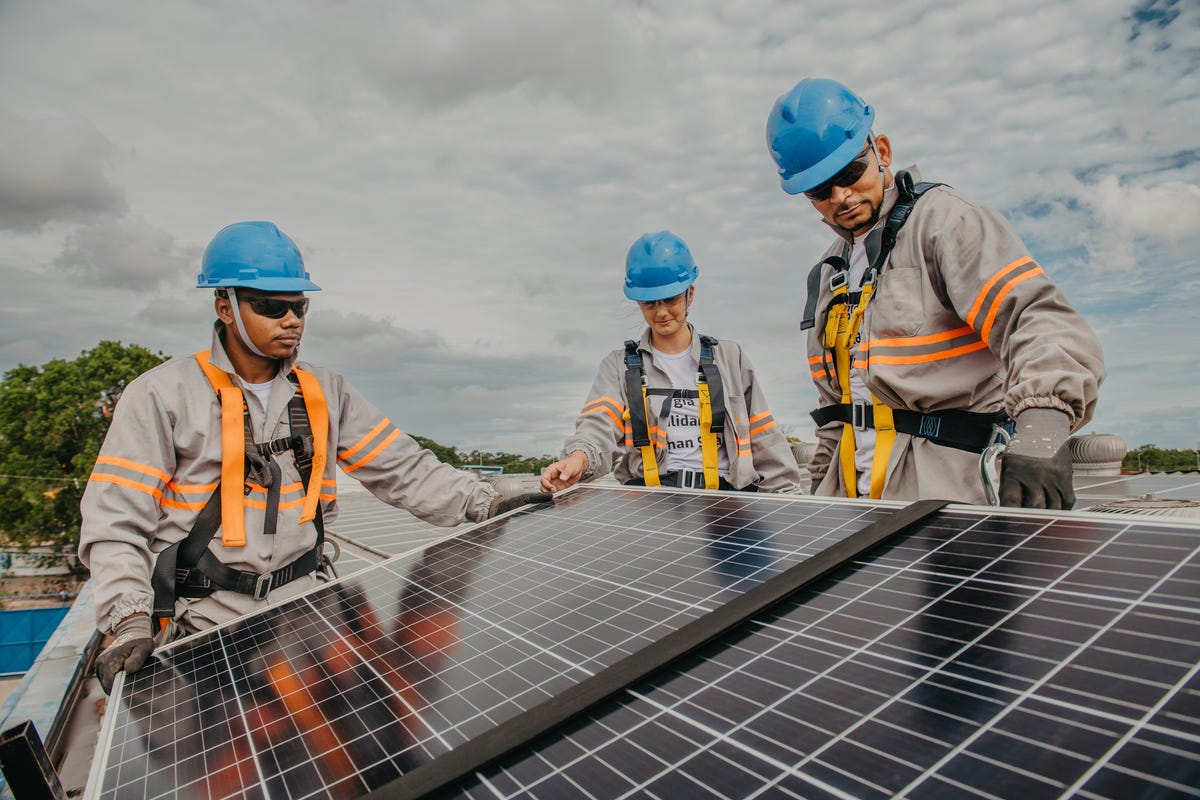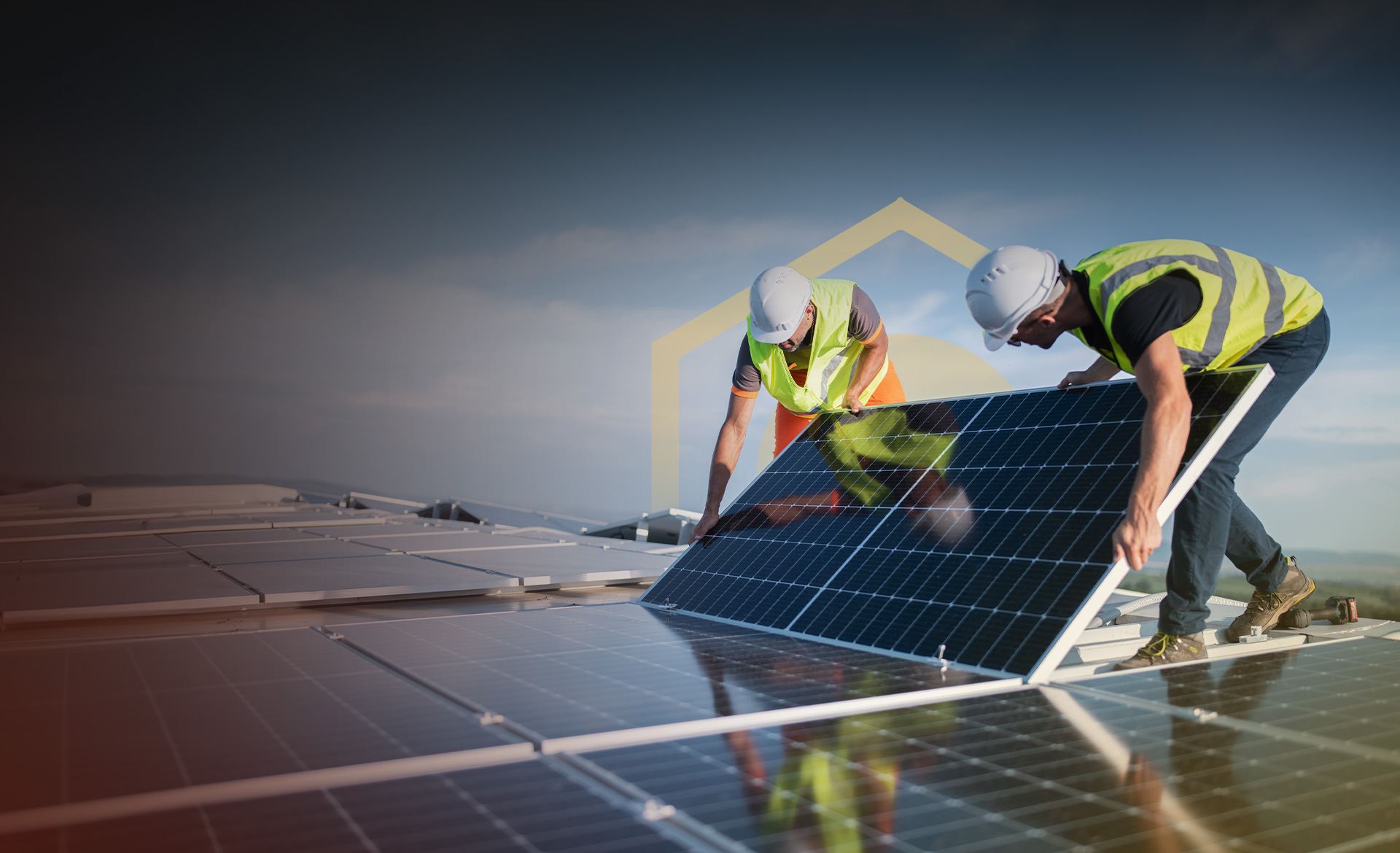The Solar Panel Installation Pennsylvania PDFs
The Solar Panel Installation Pennsylvania PDFs
Blog Article
Home Solar Services PA: Our Firm Focuses On The Setup And Management Of Photovoltaic Energy Systems
History and Advancement of Photovoltaic Panel Business
The beginning of photovoltaic panel business can be traced back to the 1800s when Alexandre Edmond Becquerel found the photovoltaic impact. Would he have pictured how his discovery would transform the way we harness energy?
Early Beginnings

In 1954, Bell Labs established the first useful solar battery. This marked a substantial turning point in the history of solar energy. They were at first used to power space satellites, but who knew this was just the start?
Development and Growth
- In the 1970s, an energy crisis led to increased interest in renewable resource sources, consisting of solar energy.
- By the 1990s, improvements in innovation and increasing ecological awareness resulted in the development of solar panel companies globally.
A New Era
As we went into the 21st century, the solar market saw an exponential growth. The need for tidy and renewable resource brought about a new age in the solar panel industry.
Remarkable Facts
- The world's very first solar power station was constructed in 1982 in Hisperia, California.
- By 2019, solar energy had actually ended up being the world's fastest-growing source of power.
Indeed, the journey of solar panel companies has been remarkable, hasn't it? The future holds enormous capacity, with constant advancements paving the way for a sustainable future. Can we imagine a world powered totally by solar energy?
Progressing
Today, solar panel business continue to innovate, pursuing more efficient and cost-efficient options. The development of solar energy has come a long way, and yet, the journey has just started.
The Core of Photovoltaic Panel Production
Ever question what goes into producing those glossy, sun-loving photovoltaic panels? The process is as excellent as completion item (Solar Panels Pennsylvania). High-purity silicon, the primary ingredient in solar panels, goes through various transformations to ensure its efficiency and resilience
From Sand to Silicon
Crystalline silicon, the backbone of a lot of solar panels, stems from basic sand. It's an interesting journey, isn't it? The sand undergoes a high-temperature response with carbon to form silicon. However, this isn't simply any silicon. The silicon used in solar panels is "solar-grade," with a pureness of 99.9999%. It's this pureness that makes it possible for the panels to efficiently transform sunshine into power.
Ingot Development
Once the silicon is pure enough, it's time to form ingots. Image a big, cylindrical block of solid silicon. How is this achieved? Through a procedure called Czochralski process, where the silicon is melted and after that slowly recrystallized. It's a slow dance of science, resulting in a solid item that is nearly as pure as the raw silicon itself.
Slicing into Wafers
The ingots are then sliced into wafer-thin pieces, like slicing a loaf of bread. Each slice is a potential solar cell, waiting to harness the power of the sun. Did you understand that the silicon wafers are just about 200 micrometers thick? That has to do with half the density of a human hair! The process requires precision and perseverance, however the result is a set of wafers all set to be developed into solar batteries.
Developing Solar Battery
With the wafer ready, it's time for the magic to happen. The silicon wafer is 'doped' with other elements like phosphorous and boron to develop an internal electric field. It's this field that makes it possible for the conversion of sunlight into electrical power. Complex, isn't it?
Assembly and Quality Assurance
Solar cells resemble puzzle pieces that come together to form a photovoltaic panel. The cells are soldered together in a grid-like pattern, then covered with a protective layer of glass. The last step includes strenuous quality control checks. It's necessary that every solar panel performs at its peak, wouldn't you agree?
Expert Tip
Always remember that even the most efficiently made solar panel can lose effectiveness due to dirt and particles build-up. Regular cleansing can significantly enhance your panels' efficiency.
Comprehending the Ecological Effect of Solar Panel Business
Ever considered the environmental footprint of a solar panel company? Green innovation, such as solar, has transformed our energy landscape, but what about the behind-the-scenes effect?
The Manufacturing Process: A Double-Edged Sword
The production procedure for solar panels demands a substantial quantity of energy. This procedure, referred to as 'em bodied energy', can be viewed as a form of 'energy debt'. It's a little like borrowing today's sunlight to power tomorrow's energy needs. However worry not, the energy payback time is often much shorter than you 'd believe!
- The energy payback duration for photovoltaic panels is normally 1-4 years.
- After this period, the energy produced is essentially carbon-free.

Life After Decommission
And what takes place when a solar panel reaches the end of its lifespan? Can it simply be tossed into the trash? No, that wouldn't be very green, now, would it?
A viable solution is recycling. While solar panel recycling is still in its infancy, it holds a world of potential. Recycling not only keeps products out of landfills but also decreases the need for new raw products.
Accountable Sourcing: More Than A Buzzword
Where does the silicon originated from, you ask? Regrettably, the industry's demand for silicon and uncommon minerals can lead to destructive mining practices. Accountable sourcing is for that reason essential to check here minimize harmful environmental effects.
Reduced Carbon Emissions: The Larger Picture
Let's not forget the larger photo: solar energy considerably reduces carbon emissions. When set up, photovoltaic panels produce clean, renewable resource, offsetting their preliminary manufacturing footprint.
In other copyright, the environmental effect of photovoltaic panel companies is an intricate concern. With responsible practices, the guarantee of a cleaner, greener future is well within our grasp.
Financial Efficiency and Market Share of Photovoltaic Panel Companies
Ever questioned why some solar panel companies - Commercial Solar Panels PA beat others in the market? What sets them apart? The crucial lies in their financial efficiency and market share
Financial Efficiency: A Crucial Indicator
Financial performance plays a critical function in the success of any company. For solar panel companies, it's no various. Strong financial performance makes it possible for these business to invest in advanced innovation, research, and development, therefore producing high-quality, efficient solar panels.
However how do they accomplish this? With a concentrate on expense efficiency and strategic investments. Business that handle to minimize production costs without compromising on quality tend to fare much better in the market.
Market Share: A Step of Success
Market share, on the other hand, is a direct reflection of a business's popularity amongst customers. A high market share means more homeowners are choosing their photovoltaic panels over competitors.
What's the secret dish for gaining a larger market share? It comes down to customer fulfillment and brand reputation. Business that prioritize customer requirements and maintain a positive brand image are more likely to catch a larger share of the market.
- Client Satisfaction: Solar panel business that provide reliable products and remarkable consumer service tend to have higher consumer fulfillment rates.
- Brand name Track record: A strong brand credibility is built gradually through consistent delivery of quality product or services.
Financial Performance and Market Share: The Cooperative Relationship
Interestingly, the relationship between monetary efficiency and market share is not one-sided. They feed off each other. A strong monetary performance can increase a business's market share, while a high market share can improve financial efficiency.
As a photovoltaic panel company, stabilizing these two elements is essential for long-lasting success. A business that ignores either of them might discover it tough to preserve its position in the competitive solar industry.
The Takeaway
So, what does all this mean for you? Whether you're a homeowner aiming to set up solar panels or a financier eyeing the solar market, understanding the financial efficiency and market share of solar panel companies is essential. They are key indicators of a company's health and potential for future growth.
Report this page